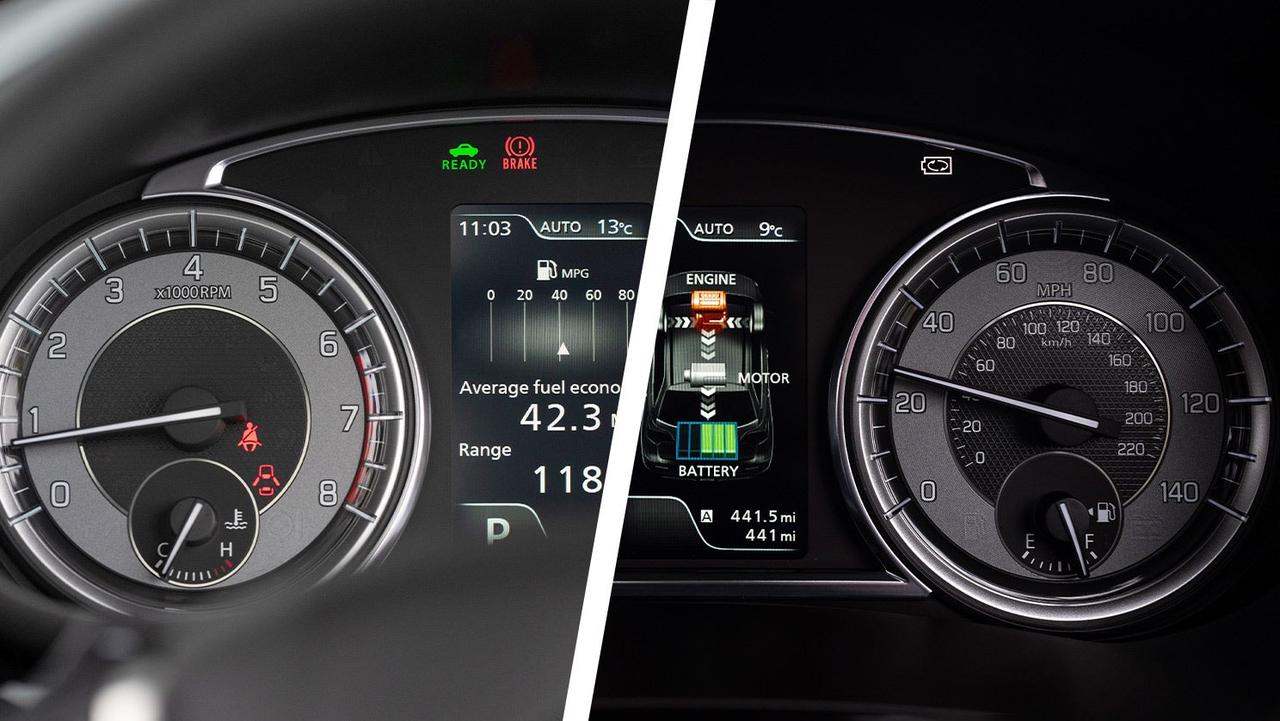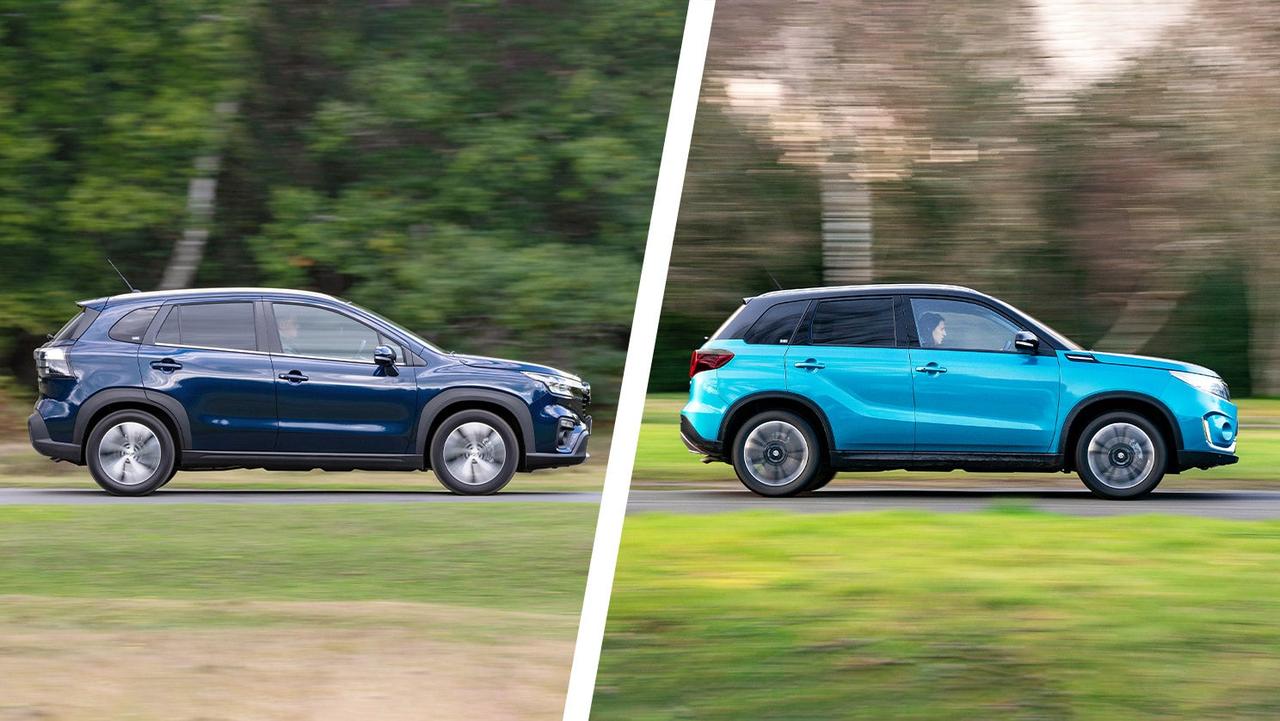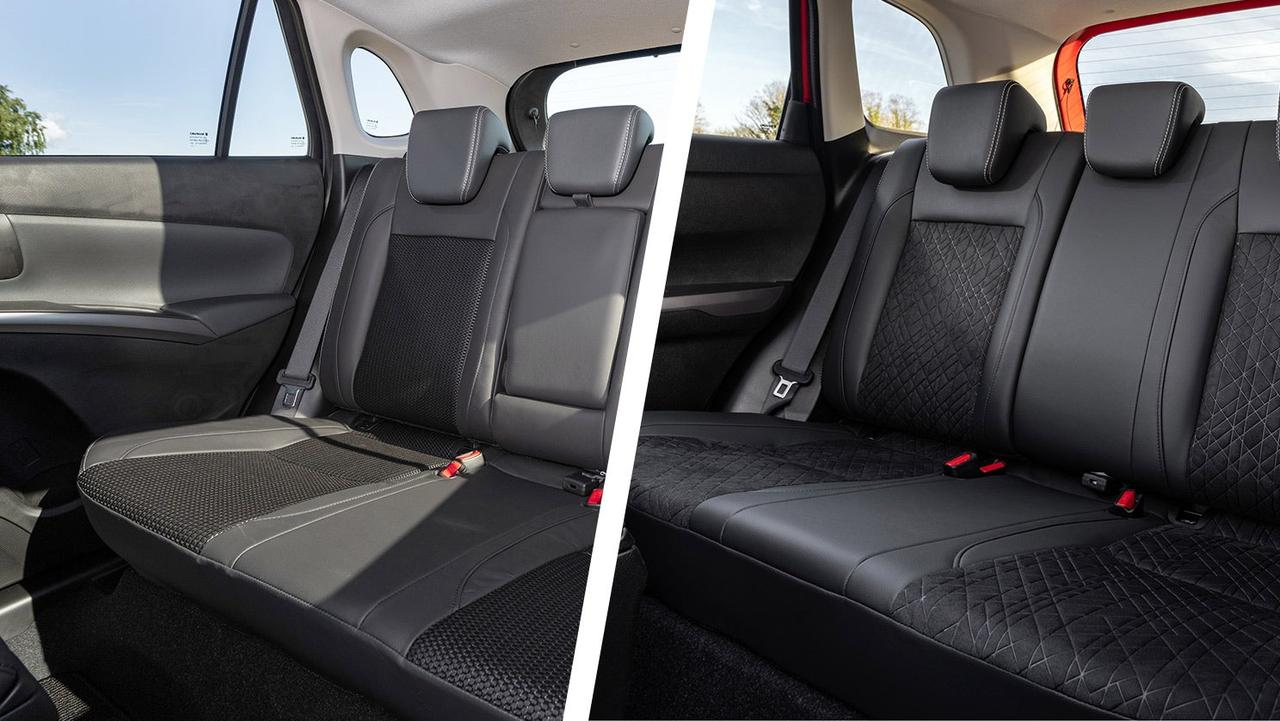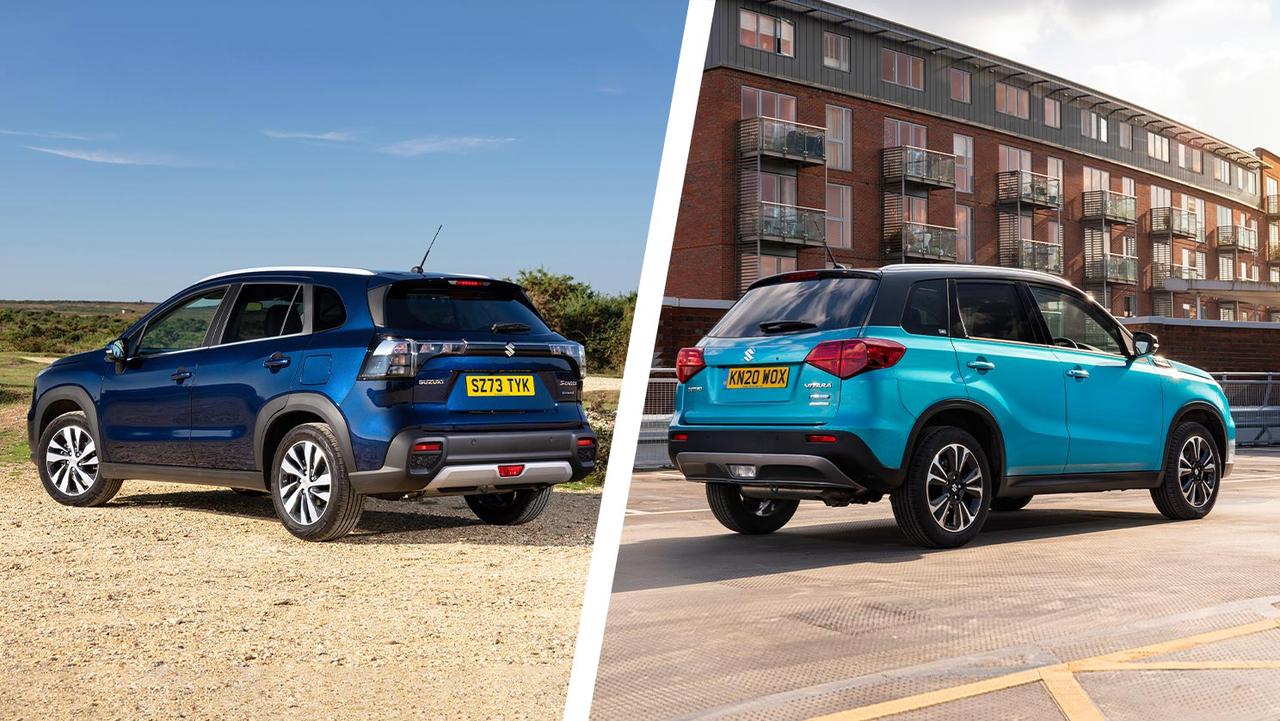Suzuki's been building affordable SUVs since before they were cool, so it knows a thing or two about what makes a good one.
The Suzuki S-Cross is the second-largest SUV the company makes behind the rare Across, but it's still affordable enough for most families and compact enough that it can easily sneak through urban traffic. On the other hand, the Suzuki Vitara is a fair chunk more compact, but still scores well for practicality and affordability.
This guide will talk you through both options so you can choose the one that suits you best. You'll find massive savings on either model by shopping used cars at Motorpoint.
Suzuki S-Cross vs Vitara compared
| Suzuki S-Cross | Suzuki Vitara |
Pros:
| Pros:
|
Cons:
| Cons:
|
Styling and design

This is the third-generation S-Cross and it's no exaggeration to say it's the best looking version Suzuki's released to date. Unfortunately, that's more a reflection of how unattractive its dumpy predecessors were, rather than a vote of confidence in the S-Cross's looks. The front end now has a fairly clear identity with a bluff grille and chrome details that flow into the headlight units, but the rest of the car is shaped like a generic crossover that could've come from a Grand Theft Auto game.
The Vitara is hardly the belle of the ball, but in this context it looks like the far more stylish choice. Its slatted front grille recalls early Jeep models and blends into its neat, triangular headlights. The bodywork has more angular, muscular detailing reminiscent of other rugged off-roaders, and the whole look is enhanced if you pick the optional black contrast-colour roof, which helps the car look less slab-sided.
Interior and practicality

Hailing from the same company means the S-Cross and Vitara share lots of the same cabin features and switchgear, with identical steering wheels and climate controls on both models. That translates to decent usability across both models, with adjustments to the stereo and climate being easy on the move. Sadly, neither cabin especially impresses for its styling – the S-Cross gets something resembling soft-touch material on the dash top, while the Vitara has some Alfa-Romeo-esque air vents but, beyond that, there's little in either car to appeal to the senses.
At less than 4.2 metres long, the Vitara barely takes up any more room on the road than superminis such as the Ford Fiesta, but it has a much larger cabin. There's enough room for average-sized adults to sit comfortably in all four outer seats, and space for a fifth to squeeze in for short jaunts. The S-Cross is simply the bigger car, however, which means even tall adults can sit behind similarly tall passengers up front with space to spare, and you could feasibly upgrade your pug to a spaniel without running out of boot space.
Engines and performance

Both cars wear Suzuki badges, so it's no surprise that many of their oily bits are shared between the two models. As a result, both cars get the same engine choice – a 1.4-litre turbo petrol with a six-speed manual, or a 1.5-litre full-hybrid with an automatic gearbox.
Performance and fuel economy figures for the two models are essentially the same and, in both cases, the 1.4-litre manual-equipped car is the one to go for. This engine is free-revving with great low-speed responses and decent overtaking power on the motorway – plus the manual gearbox has a satisfying light-yet-mechanical action.
Earlier 1.4-litre turbo cars came with an optional automatic, but the 1.5-litre hybrid is now your only two-pedal choice in the lineup. At urban speeds, the hybrid motor does a good job of moving the car without fuss but, on the open road, the drawbacks of its automated-manual-style gearbox become apparent. There's a noticeable head-nodding sensation as the computer changes gears and, without the 1.4-litre's turbocharger, the engine sounds strained as you push it up to motorway speeds.
Driving

Behind the wheel, there are plenty of similarities in the way these two cars drive. Suzuki tends to set its cars up on the firm side – which is evident in both these cars – but with just enough compliance that hard impacts don't make it all the way to your spine. Nasty road surfaces will also send some high-frequency vibrations past the suspension up to the base of your seat.
The tradeoff for the slightly stiff ride is that both these SUVs handle well – resisting the wobbly roly-poly sensation some rivals suffer from on tight, twisty roads. This is aided by lightweight but accurate controls, which mean you're never guessing how much lock or pedal pressure to use. If we're splitting hairs, the Vitara feels a touch smaller and lighter on its feet, while you're slightly more aware of the S-Cross's greater weight transferring over through direction changes – but you'd need to drive them back-to-back to really notice.
Value and reliability

If you were to buy these cars brand new, the S-Cross would cost a few thousand pounds more than the Vitara because it's the larger of the two. Things are a little different on the used market, however.
The Vitara tends to hold onto its value a little better than its bigger sibling, which means prices get much closer on the used market. Equivalent models with similar age, mileage and specifications can sometimes cost within £1,000 of each other, which mostly negates the price penalty you'd normally have to pay for the more practical car.
As you look at older and higher-mileage examples, you'll find more affordable options in the Vitara lineup thanks to the fact it's been on sale longer and previously offered more entry-level options to choose from.
Suzuki has a good reputation for building robust cars and neither the S-Cross nor the Vitara should present many serious issues during your ownership. Like all cars, you can make sure they last as long as possible by keeping up with scheduled maintenance, and you can gain greater peace of mind by adding an extended warranty when you buy your Suzuki.
Which is best?

The S-Cross makes a really compelling case for itself. It's spacious and easy to use, it's fun to drive without being overly sporty, and prices are extremely close to the Vitara on the used market, so represents excellent value for money. Plus, when you're sat inside, you won't be bothered by one of its biggest drawbacks – the bland styling.
However, there's something that both we and used-car buyers seem to prefer about the Vitara. Maybe it's the slightly more entertaining handling or the sharper looks, but the smaller SUV just feels like a more tempting package. Plus, with strong practicality that outstrips its footprint on the road, the Vitara's still very easy to live with.
Whichever you choose, you can save thousands off the brand-new price by buying a used Suzuki S-Cross or a used Suzuki Vitara from Motorpoint. For more practical choices that won't weigh on the wallet, take a look at the best hybrid SUVs on sale.



































